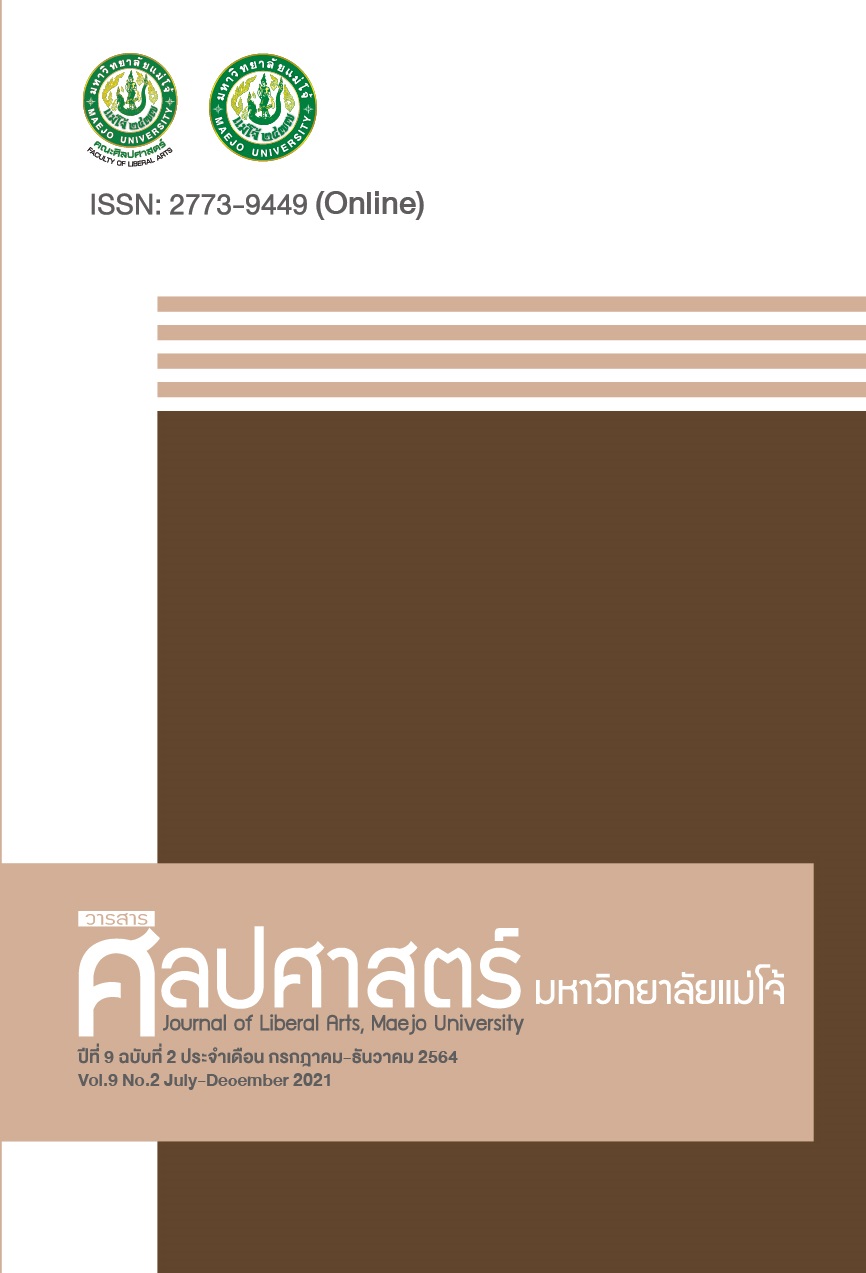Digital Volunteers and Disaster Management: Experiences from the Great East Japan Earthquake
Main Article Content
Abstract
Digital volunteers in this study refer to those volunteers who apply Information technology, in whole or in part, as a tool to access volunteer information and to participate in volunteer activities, in whole or in part, through online platforms. Although digital volunteers have newly emerged, they play an important role and have gained more attention nowadays due to the evolution of information technology (IT) that provides fast and easy access to information. This new technology and the expansion of social media encourage people from several places in the world to take part digitally and voluntarily by applying their digital skills in helping victims from disasters and emergency crises without travelling to the site of the disaster. This article aims to study the change of voluntary patterns during disasters by using the Great East Japan Earthquake in 2011 as a case study. It also analyzes the challenges of the new patterns of voluntary activities and motivates the awareness of Thai governmental authorities in preparation for the constructive participation of digital volunteers when a disaster occurs. Based on documentary research, this study found that although the roles of digital volunteers are becoming more common and popular nowadays through various online activities on social media, an absence of a fact-checking system in order to obtain accurate, reliable, and up-to-date information and a lack of integrated institutional and organizational structure are sometimes hindered volunteer operations and the effectiveness of digital volunteers’ participation.
Article Details
References
Appleby, L. (2013). Connecting the Last Mile: The Role of Communications in the Great East Japan Earthquake. London: Internews Europe.
Chernobrov, D. (2018). Digital Volunteer Networks and Humanitarian Crisis Reporting, Digital Journalism, 6(7), 928-944.
Clary, E. G. & Snyder, M. (1991). A functional analysis of altruism and prosocial behavior. Review of Personality and Social Psychology, 12, 119-148.
Fishwick, C. (2014, March 14). Tomnod – the online search party looking for Malaysian Airlines flight MH370. The Guardian. https://www.theguardian.com/world/2014/mar/14/tomnod-online-search-malaysian-airlines-flight-mh370
Handy, F., Brodeur, N., & Cnaan, R. (2006). Summer on the island: Episodic volunteering. Voluntary Action, 7, 31-46.
Hustinx, L. & Lammertyn, F. (2003). Collective and Reflexive Styles of Volunteering: A Sociological Modernization Perspective, Voluntas, 14, 167-187.
Lindsay, B. (2011). Social Media and Disasters: Current Uses, Future Options, and Policy Considerations. Washington DC: Congressional Research Service.
McLennan, B., Whittaker, J., & Handmer, J. (2016). The changing landscape of disaster volunteering: opportunities, responses and gaps in Australia. Natural Hazards, 84 (3), 2031-2048.
Meier, P. (2012). Crisis Mapping in Action: How Open Source Software and Global Volunteer Networks Are Changing the World, One Map at a Time. Journal of Map & Geography Libraries, 8, 89-100.
Meier, P. (2015). Digital Humanitarians: How Big Data is Changing the Face of Humanitarian Response. Boca Raton, Fl: CRC Press.
Miyabe, M., Miura, A., & Aramaki, E. (2012). Use trend analysis of twitter after the great east Japan earthquake. Proceedings of the ACM 2012 conference on computer supported cooperative work companion, USA, 175-178.
Nagar, S., Seth, A., & Joshi, A. (2012). Characterization of social media response to natural disasters. Proceedings of the 21st international conference on world wide web, USA, 671-674.
Ono, A. (2012, April 11). Lost and Found: Salvaging memories. Planet Magazine. http://www.planet-mag.com/2012/art/aiya-ono/lost-and-found/.
Rauhala, E. (2011, March 11). How Japan Became a Leader in Disaster Preparation. TIME Magazine. http://content.time.com/time/world/article/0,8599,2058390,00.html.
Reuter, C., Heger O., & Pipek V. (2013). Combining Real and Virtual Volunteers through Social Media.” In T. Comes, F. Fiedrich, S. Fortier, J.Geldermann & T. Müller (Eds.), Proceedings of the Information Systems for Crisis Response and Management (pp. 1-10). Baden-Baden, Germany: ISCRAM.
Shaskolsky, L. (1967). Volunteerism in disaster situations. Preliminary paper no. 1. Disaster Research Center, University of Delaware. Delaware.
Smith, D. H. (1981). Altruism, volunteers, and volunteerism. Nonprofit and Voluntary Sector Quarterly, 10(1), 21-36.
United Nations Volunteers. (2000). Below the waterline of public visibility: Roundtable on volunteerism and social development. UN Volunteers. https://forum-ids.org/wp-content/uploads/2000/11/20389900-The-Hague-Paper-UNV-2000.pdf.
United Nations Volunteers. (2011). UNV Annual Report “Volunteering for our Future”. UN Volunteers. https://www.unv.org/sites/default/files/UNV_Annual_report_2011_ en_web.pdf
Utani, A., Mizumoto, T., & Okumura, T. (2011). How geeks responded to a catastrophic disaster of a high-tech country; rapid development of counter-disaster systems for the great east Japan earthquake of March 2011. Proceedings of the special workshop on internet and disasters, ACM, 9-16.
Wolensky, R.P. (1979). Toward a broader conceptualization of volunteerism in disaster. Nonprofit and Voluntary Sector Quarterly, 8, 33–42.

